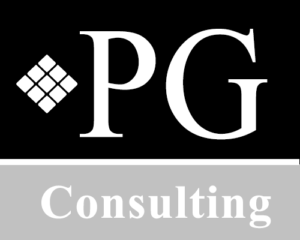5 Hidden Costs of Outdated HR Structures (And How to Fix Them)
In the recent competitive environment, every business owner is laser-focused on growth and profit maximization. Yet, many strong indigenous and multinational brands overlook one of the biggest bottlenecks: an outdated HR structure.
Your Human Resources department should be the engine of growth—a strategic partner that moves your people from potential to profit. Instead, an inefficient or legacy structure often acts as a silent drain, hemorrhaging resources, slowing productivity, and exposing the company to unnecessary risk.
At PG Consulting, we specialize in transforming this function, moving organizations from people to profit. Here are the five most significant hidden costs of outdated HR structures we see crippling businesses, and the strategic human capital solutions required to fix them.
1. The Escalating Price of Compliance Failure
Many established organizations rely on patchwork, manual systems to manage an increasingly complex regulatory landscape. This isn’t just inefficient—it’s financially dangerous.
- The Drain: Misclassification of employees, late tax filings due to manual payroll processes, or outdated labor contracts expose your business to escalating penalties and costly litigation. These are the fines you never budgeted for.
- The Fix (HR Overhauling): A strategic HR Overhaul replaces manual processes with modern, compliant systems. This includes an HR audit to identify all areas of non-compliance and the implementation of robust digital tools for automated record-keeping and regulatory updates.
2. High Turnover Due to Poor Employee Experience
When your HR department is bogged down by administrative tasks, it has no capacity to focus on your people. This lack of strategic HR translates directly into poor employee experience, which drives up one of the most expensive business costs: turnover.
- The Drain: The true cost of replacing an employee is often estimated to be 1.5 to 2 times their annual salary (including recruitment, training, and lost productivity). Outdated HR structures make simple processes (like onboarding or performance review) clunky, leading to disengagement and voluntary departures.
- The Fix (HR Restructuring): HR Restructuring shifts the HR focus from administration to employee engagement. This involves creating a strategic HR Business Partner (HRBP) model that proactively addresses employee concerns and implements modern learning & development programs to retain your top talent.
3. Lost Opportunity in Slow Recruitment
Can your business afford to lose a top candidate simply because your hiring process is slow? For businesses seeking aggressive growth, slow recruitment is a direct drag on revenue.
- The Drain: An inefficient HR structure often features lengthy, multi-layered approval chains and poorly defined job roles. This causes key positions to sit vacant for months, overburdening existing staff and delaying critical projects. This is a direct HR efficiency drain on your business’s ability to deliver.
- The Fix (Recruitment Outsourcing): Streamline the process with professional support. HR Recruitment Services can be outsourced or digitally optimized to leverage specialized talent pools and accelerate the time-to-hire for critical roles. This ensures you secure the best people before your competition does.
4. The Unseen Drag on Productivity
Legacy organizational design problems manifest as confusion over roles, duplication of effort, and a lack of clear accountability. Your top teams waste time trying to figure out who is responsible for what.
- The Drain: When employees lack clear job descriptions or reporting lines, departmental silos become the norm. Meetings become inefficient, decisions stall, and your best employees become frustrated with bureaucracy, leading to a measurable drop in company-wide Employee Productivity.
- The Fix (Business Consulting & Training): Use Business Consulting to perform a targeted operating model review. This re-maps workflows and clarifies reporting structures. Follow this with high-quality, targeted training to equip managers with the skills to lead the newly optimized teams.
5. Strategy Stagnation
The ultimate function of an effective HR structure is to act as a strategic partner to the CEO. When HR is overwhelmed by administrative chaos, it fails to contribute to the big-picture strategy.
- The Drain: The HR team cannot provide the necessary human capital solutions—like succession planning, workforce analytics, or talent forecasting—that drive strategic business decisions. This forces the executive team to make critical calls without essential data, risking the business’s long-term competitive edge.
- The Fix (Strategic Partnership): Partner with experts to instill a data-driven culture in your HR team. By automating routine tasks (HR Outsourcing), your in-house HR team can be freed up to focus on analytics and contribute to your executive strategy.
Conclusion: Time to Move from People to Profit
The cost of maintaining an outdated HR structure is not paid for in monthly fees, but in lost profit, legal exposure, and the flight of your best talent. It’s a cost no growing business can afford.
PG Consulting is committed to helping you transform your Human Capital into your most valuable asset. We move you all the way, from People to Profit.
Ready to find and fix the hidden drains in your organization?





